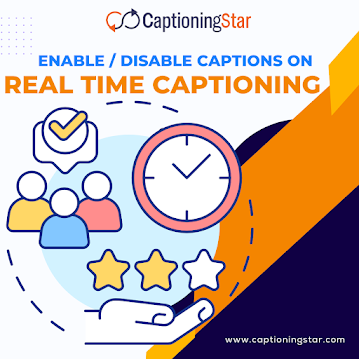Real-time captioning
Real-time captioning services, also known as live captioning or real-time transcription, provide instant text captions for live events, presentations, broadcasts, or other situations where real-time access to spoken content is necessary. These services are especially valuable for individuals who are deaf or hard of hearing, as well as for non-native speakers or those who prefer reading captions for better comprehension.
Real-time captioning typically involves a trained captioner or stenographer who listens to the audio feed of an event and transcribes the spoken words into text. The text is then displayed on a screen, often synchronized with the ongoing event. This allows participants to read the captions as the event unfolds.
There are various methods for providing real-time captions:
Stenography: A stenographer uses a specialized machine called a stenotype to type phonetic codes that represent words, phrases, and sounds. The stenotype's output is then translated into text by specialized software, which generates the real-time captions.
Voice Recognition: Automatic Speech Recognition (ASR) technology can be utilized to convert spoken words into text. ASR software listens to the audio feed and transcribes it in real-time. However, ASR-based captioning may have accuracy limitations compared to human stenographers.
Real-time captioning services can be provided onsite or remotely, depending on the specific requirements and setup of the event. It's important to note that real-time captioning services may require prior arrangements to ensure availability and coordination.
If you need real-time captioning services for a specific event or situation, it is recommended to reach out to professional captioning service providers or companies specializing in accessibility services. They can provide detailed information about their offerings, pricing, and technical requirements to meet your specific needs.
Know more : Real-time captioning


Comments
Post a Comment